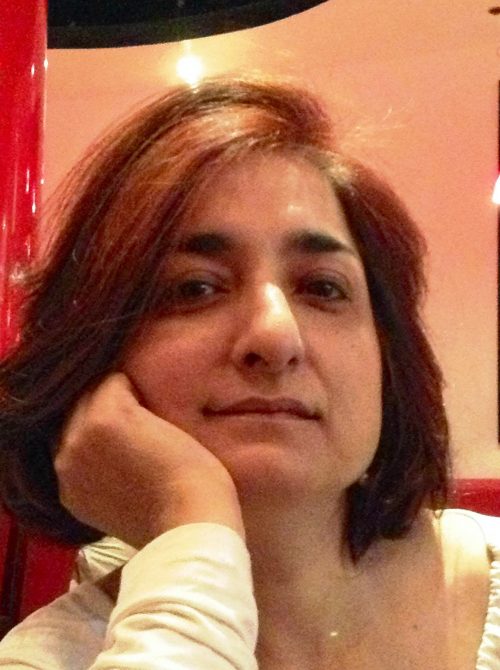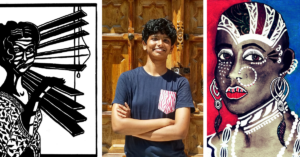Book Excerpt: How an Autism Diagnosis Turned the Worlds of Two Mothers Completely Upside-Down
Whereas all mothers are expected to be selfless and caring, those who are confronted with mothering a disabled child have to literally find their ‘salvation’ in untiring care and sacrifice. Here’s a look at how autism mothers cope in the face of their double-burden, in this excerpt from Embodying Motherhood: Perspectives from Modern India, by Anu Aneja and Shubhangi Vaidya, published by Sage Publication’s Yoda Press.

Whereas all mothers are expected to be selfless and caring, those who are confronted with mothering a disabled child have to literally find their ‘salvation’ in untiring care and sacrifice. Here’s a look at how autism mothers cope in the face of their double-burden, in this excerpt from Embodying Motherhood: Perspectives from Modern India, by Anu Aneja and Shubhangi Vaidya, published by Sage Publication’s Yoda Press.

Preeti’s Story
Preeti, a personable young woman, was in her early 30s when I first interviewed her. Her husband was a corporate executive and they were an upwardly mobile, upper-middle-class couple, staying in a well-furnished apartment in Delhi. Preeti gave up her job and became a full-time mother after the birth of her son R. …
Although his early milestones (head-holding, creeping, crawling) were within the ‘normal’ range, his lack of speech even after his first birthday worried her. He started attending a neighborhood play-school, but his play-group teacher was baffled at his inability or unwillingness to join in play activities. She described him as ‘abnormal’, and eventually he was withdrawn from the school. He would throw terrible temper tantrums, scream and cry continuously, and display self-injurious behaviour. His father attempted to discipline him by hitting and shouting; this would frighten the child into submission but it deeply upset Preeti, who became very protective. She would have serious arguments with her husband over the issue of management of the child. When the child turned three, they consulted at one of the country’s leading hospitals, where they received a diagnosis of autism. They had no idea what autism was; it was only when they read the information booklets provided by the institution that they realized it was a life-long disability. The young couple was devastated. Preeti reported that she wept for months. However, she slowly tried to come to terms with this painful reality and do what she could to help her child. Her husband was caught up in the demands of his career; it fell to Preeti to devise ways and means of teaching, training, helping R to ‘fit in’. …

Due to the lack of educational opportunities available for autistic children in their home town, they moved to Delhi and enrolled the child at a Special Needs Centre. The child responded well to the therapy and started showing improvement; this filled the young parents with renewed hope. Preeti even trained as a special educator and worked part-time. But as the years rolled on, R’s extremely complex difficulties took a severe toll on her energy, enthusiasm and optimism. Her daily activities revolved exclusively around his needs; she hardly ever went out to meet friends or family, and had minimal interaction with the neighbours. She would take R to school, get him home in the afternoon, and spend the rest of the day attending to him. She felt that any time not spent ‘doing things’ or ‘working’ with R was time wasted. Yet when they were home together, she did not know how to engage him because he was ‘not interested in anything—toys, books, TV, nothing.’ … He would oscillate between bouts of extreme anger and aggression, and depression and misery. At the time of the fieldwork, he was under very strong psychiatric medication. During his angry spells he would pull Preeti’s hair and claw at her face, sometimes hitting or kicking so hard, that she would fall down. He was a big, strong, heavy child and could inflict considerable physical harm, especially when in a fury. His mother confided that her greatest fear was that he might injure or even kill her when he grew up: ‘he’ll be treated badly… people will lock him up, hit him.’ She would sometimes lose her temper and self-control but then feel intense guilt and self-hatred because she knew that her son was not deliberately trying to hurt her, but rather was a victim of his disorder. She experienced feelings of frustration and rage, tenderness and pity: ‘What else can you call it? Because he is not a complete human being.… Who can he take his anger out on except his mother? After all, even we vent our anger onto our mummy.’ Torn between her concern about her child and her own feelings of misery and loneliness, Preeti’s condition at the time I interviewed her was one of entrapment in the expectations of selfless motherhood. There was a sense of alienation in an anonymous urban milieu, and the politics of care that emerged from the gendered segregation of the ‘homemaker/breadwinner’ roles. Her plight underscores the paucity of services such as respite care and residential facilities where parents can admit children with extreme symptoms or high-support needs; wretched conditions that prevail in state-run facilities and the prohibitive costs and unregulated nature of privately managed ones push families in to a corner; urbanization, migration away from natal homes, and disintegrating joint family networks combine to create an impossible situation where parents are, literally, the first and last resort, and the mother the primary provider of life-long care.

Kavita’s Story
Kavita grew up in a small town in the eastern part of India. She belonged to a family of traders, and had a sheltered and happy childhood. After her marriage to a groom selected carefully by her family, she continued to lead a regimented existence as the daughter-in-law of a large joint-family household. Three years later, her daughter D was born. She was a very frail baby, susceptible to all kinds of infections. Kavita cannot recall anything conspicuously odd about her, except the lack of speech, but her in-laws assured her that she was just late in that department. Deafness was suspected because of fungal infections in the ear, but soon ruled out. Eventually, D was taken to Delhi to a well-known hospital for an evaluation. She was given a provisional diagnosis of autism and referred to a special needs centre for rehabilitation. Kavita and her husband had never heard of autism; and it was only after repeated visits and counselling did they realize the import of the diagnosis and that there was no ‘cure’. …
Lack of services and facilities in their hometown made them consider moving to Delhi. It was a very difficult decision for them to take because it meant leaving behind D’s aged grandparents and the security of the joint household. Kavita’s husband arranged for a rented accommodation close to the special school where they admitted their daughter. Kavita had to learn to live alone in a big city. It was at this juncture in her life that the sheltered, shy, young woman started coming into her own. …

The experience of being a mother of a child with autism changed the lives of both women in profound ways. Kavita learnt to live alone in Delhi away from the sheltered joint-family situation. She negotiated with property dealers, shopkeepers and vendors. She learnt how to manage and teach her child. She interacted with other mothers and fathers. She became a mentor for families who travelled from the country’s hinterland to seek help for their child, just as she had done. She described her transformation as ‘saree se suit’ (i.e., from a traditional saree to a practical, modern salwar suit). The shy, silent woman found her voice.
Preeti, despite her superior education and training, financial stability, and strong, supportive ties with parents and extended family, withdrew into a constricted domestic space with her severely challenged child. … Their perceptions about their children’s disability and personhood were conditioned by their experiences.
(Excerpted from Embodying Motherhood: Perspectives from Modern India, by Anu Aneja and Shubhangi Vaidya; Published by Sage Publication’s Yoda Press; Pp: 218; Price: Rs 795/Hardcover.)
Like this story? Or have something to share? Write to us: [email protected], or connect with us on Facebook and Twitter.
NEW: Click here to get positive news on WhatsApp!
If you found our stories insightful, informative, or even just enjoyable, we invite you to consider making a voluntary payment to support the work we do at The Better India. Your contribution helps us continue producing quality content that educates, inspires, and drives positive change.
Choose one of the payment options below for your contribution-
By paying for the stories you value, you directly contribute to sustaining our efforts focused on making a difference in the world. Together, let's ensure that impactful stories continue to be told and shared, enriching lives and communities alike.
Thank you for your support. Here are some frequently asked questions you might find helpful to know why you are contributing?


This story made me
-
97
-
121
-
89
-
167














